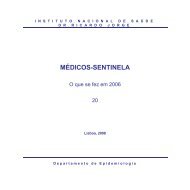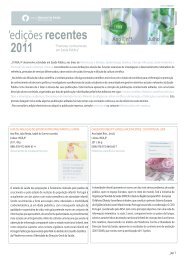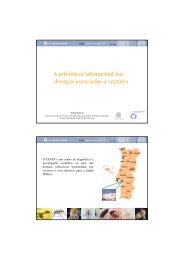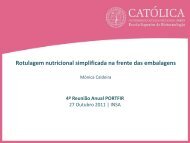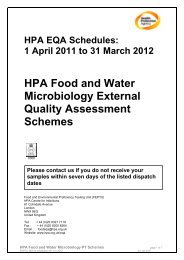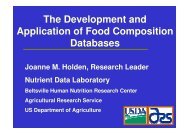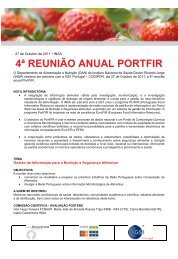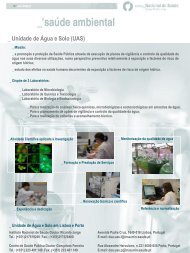European Society of Mycobacteriology - Instituto Nacional de Saúde ...
European Society of Mycobacteriology - Instituto Nacional de Saúde ...
European Society of Mycobacteriology - Instituto Nacional de Saúde ...
Create successful ePaper yourself
Turn your PDF publications into a flip-book with our unique Google optimized e-Paper software.
PP-34<br />
PHYSIOLOGICAL FITNESS AND TRANSMISSION POTENTIAL OF MULTI-DRUG<br />
RESISTANT Mycobacterium tuberculosis CLINICAL ISOLATES IN HONG KONG<br />
CHAN Chiu Yeung Raphael 1 , CHAN Wai Chi Edward 1 , AU Tai Kong Mike 1 , LAI Wai Man Raymond 2 , YEW Wing Wai 3 ,<br />
YIP Chi Wai 4 , KAM Kai Man 4 .<br />
1 - Department <strong>of</strong> Microbiology, the Chinese University <strong>of</strong> Hong Kong;<br />
2 - Department <strong>of</strong> Microbiology, Prince <strong>of</strong> Wales Hospital<br />
3 - Tuberculosis & Chest Unit, Grantham Hospital,<br />
4 - Tuberculosis Reference Laboratory, Department <strong>of</strong> Health, HKSAR, Hong Kong.<br />
This study evaluated the infectivity and transmission potential <strong>of</strong> multi-drug resistant Mycobacterium tuberculosis (MDR-<br />
MTB) strains by <strong>de</strong>termining (i) whether resistance <strong>de</strong>veloped at a physiological cost which ren<strong>de</strong>red them less capable<br />
<strong>of</strong> surviving environmental stress and infecting human host, and (ii) the <strong>de</strong>gree <strong>of</strong> genetic relatedness shared by resistant<br />
organisms, which indicated the extent by which they spread among humans. The relative growth rates <strong>of</strong> selected isolates<br />
were measured using the MGIT system and compared to that <strong>of</strong> drug-sensitive strains. Our data showed that their average<br />
initial growth rate, measured within 7 days <strong>of</strong> inoculation, was inversely proportional to the number <strong>of</strong> mutations<br />
they harbored in key resistance genes, with strains carrying 5 mutations growing at a rate 46% slower than that <strong>of</strong> the<br />
wild type. These findings suggested that resistance gene mutations in MTB imposed a range <strong>of</strong> physiological cost characterized<br />
by reduced growth fitness. However, results <strong>of</strong> epi<strong>de</strong>miological typing showed that 34% <strong>of</strong> the 402 MDR-MTB<br />
isolates analyzed exhibited genetic relationship to other strains, indicating that such fitness cost did not significantly affect<br />
the ability <strong>of</strong> MDR-MTB to transmit between human hosts and cause infection. Importantly, the i<strong>de</strong>ntification <strong>of</strong> five major<br />
clusters <strong>of</strong> 50 strains strongly suggests that infection due to dissemination <strong>of</strong> ‘parental’ MDR-MTB clones is common.<br />
On the other hand, the majority <strong>of</strong> test strains displayed a unique genetic pr<strong>of</strong>ile, indicating that MDR-MTB might also<br />
emerge in<strong>de</strong>pen<strong>de</strong>ntly through drug selection within individual patient. The DNA fingerprints and growth fitness data <strong>of</strong><br />
local resistant isolates may be used for matching the genetic i<strong>de</strong>ntities, predicting transmission potential, and tracing the<br />
routes <strong>of</strong> dissemination <strong>of</strong> future MDR-MTB isolates in the community.<br />
This work was supported by the Research Fund for the Control <strong>of</strong> Infectious Diseases (Project co<strong>de</strong> 6902191 and 6902200)<br />
106 ESM 2009



